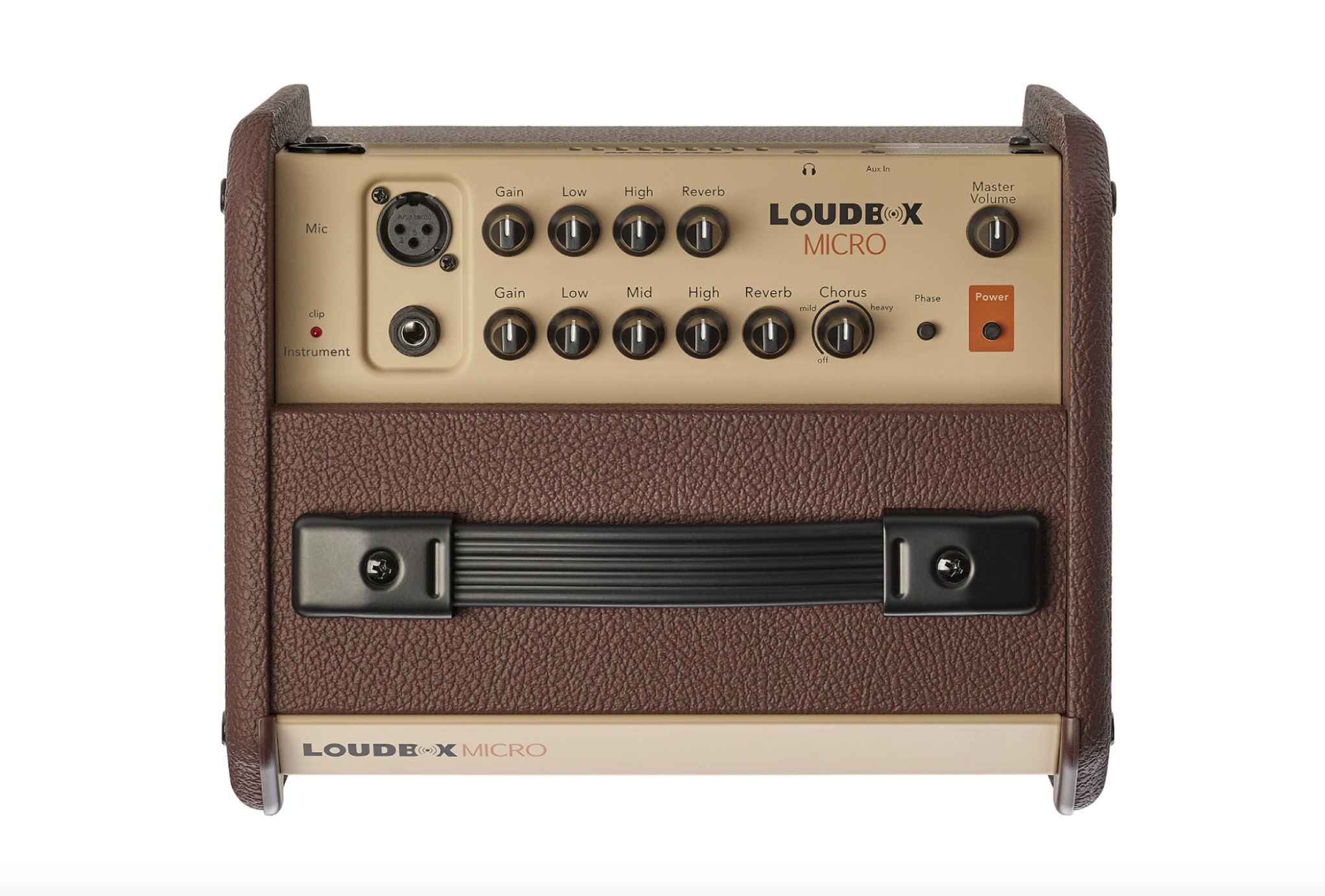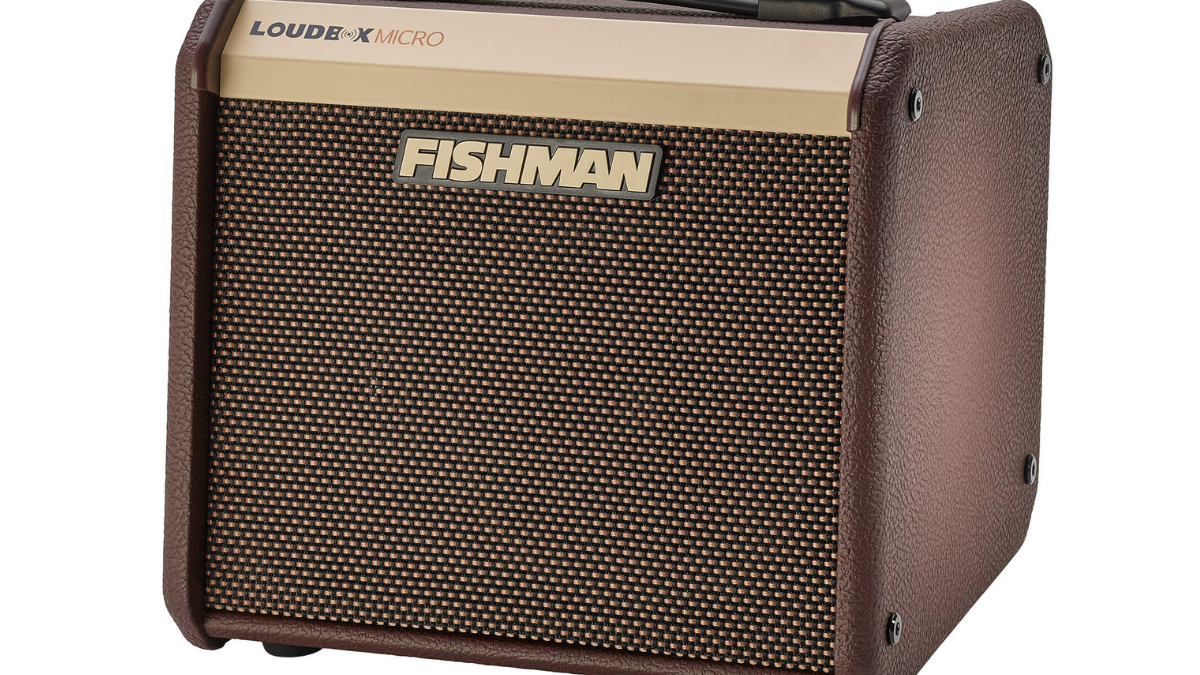Guitar World Verdict
Whether you’re serious player or maybe you’re just after an easy entry into acoustic amplification, the Loudbox Micro could be just what you’re after.
Pros
- +
Good tone.
- +
Plenty of power.
- +
Simple to use.
- +
Super value.
Cons
- -
None.
You can trust Guitar World
The acoustic guitar has never been more popular. Even before Covid gave everyone a reason and the time to take up a hobby (and acoustic guitar sales took off), the resurgence of the acoustic guitar, following MTV’s Unplugged presentations, has brought new ideas and technologies into play. The tragics talk about the guitar’s Golden Era: the late 1920s to the early-1940s. But that period has nothing on what has been happening over the last couple of decades. Guitars have never been better, never been cheaper, and there’s never been so many options: like interesting timber choices, great hardware, excellent pickups, and dedicated acoustic guitar amps.
For four decades, Larry Fishman has been serving the needs of guitar players with great sounding and innovative pickups and, lately, amplifiers. His pickups are original equipment on a huge range of brands and models, with the kind of practical on-board preamp controls that performers require. You just don’t have to think too hard about it – it’s all right there. His amplifiers, too, have user-friendly control layouts that are perfect for the live performer, with value-added features like DIs, well-chosen reverb and chorus effects, and vocal microphone channels.
Full disclosure: I have a number of Fishman products and I use my Loudbox Mini all the time so, when I had a chance to try the little brother, I was pretty keen. The Micro, at 40 watts, is a little quieter that the Mini’s 60 watts, but since Fishman amps have always had a generous output that was of little concern.
The Fishman controls are completely straight forward. There’s a microphone channel with volume, bass, treble, and reverb controls; there’s a guitar channel with volume, bass, mid, treble, and reverb controls plus a variable, two-voice chorus. You can plug anything into this channel: for this review, I used 6- and 12-string guitar, mandolin, dobro, and banjo. But I have a friend who uses a Fishman amp for flute, and another who plays fiddle through hers. There’s also a master volume and a phase switch. On the back panel you’ll find a DI, a headphone out, an Aux in, and a power port for the external power supply. And it weighs just four kilos!

The Fishman Micro was built for guitar so, naturally, that’s our first option. Plugging in a Maton MSH-210 with an AP5 system, the tone was rich and immediate. The 40 watt ceiling wasn’t an issue at all; there was plenty of power, all of it with clean headroom. Even at full volume, which was annoyingly loud, there was no break-up or fuzzy treble. I thought the main concern would be a lack of bottom end, given that I’m accustomed to a Loudbox Mini or a Loudbox Performer. And while there was not as much bass – it’s a smaller speaker in a smaller cab, after all – the bass was not underwhelming and, for fingerstyle, worked in my favour.
Playing with a band, the more focussed range of the Micro really came into its own. Where, with larger amps, the bass and low mids tended to be swamped by other instruments, the Micro’s more contained focus let those notes push through the mix with a lovely definition. I could hear those low notes quite clearly. Thinking this was an aural illusion, I switched back to my Mini and those low notes were a little hard to hear once more. Back to the Micro… and there they were.
The mandolin and banjo sounded good – very clear and precise. But the dobro was so at home, it was like the amp was purpose-built for resophonic guitars. It really voiced the guitar’s honky-ness nicely. If you play a 12-string, you’ll love the treble and upper mid jangle. Add a touch of reverb and you’ll be Eight Miles High in no time.
Back to the six-string, the internal chorus circuit adds a nice softening effect. The effect can be dialled in for a bit more depth but it doesn’t swamp the guitar tone like most chorus effects can do. I tend to add just a touch to sweeten the tone by accentuating all those lovely overtones. And here’s an idea: plug in your jazz guitar (I used a Godin 5th Avenue) for a full-range tone that will refresh your ideas about what that guitar can sound like.

If you’re regularly playing though a nice PA system, this Micro is all you need for a personal guitar monitor and to fill your stage area with some sound that doesn’t spill into the audience. You can even run a line-out, from your main system, into the input of the guitar channel (or either channel really) and have the Micro be a powered monitor wedge, carrying guitar and voice – just a thought. For the singer-songwriter, the Micro will be a blessing with its big sound and diminutive size.
The Fishman Loudbox series is built for musicians, and the Micro is a welcome addition. It has enough power, it has oodles of tone, and it’s a super easy lug. I’ve had my Fishman amps for over 7 years and they keep right on working, so it’s nice to see a compact amp with that kind of build quality.
Specs
- PRICE: $299.95 | AU$849
- POWER: 40W, Bi-Amplified
- CHANNELS: Two: Instrument and microphone
- DRIVERS: 5.25 inch poly cone woofer; 0.8 inch soft dome tweeter
- EFFECTS: Reverb and dual-function chorus
- AUX INPUT: 3.5mm
- OUTPUTS: Balanced XLR D.I. Output; 3.5mm headphone output
- DIMENSIONS: 8.1" x 10.4" x 9.5" / 206mm x 264mm x 242mm
- WEIGHT: 4.1kg (9.1lbs)
“I was playing in the living room, he walked past and shot me this look of ‘Do that again.’ So I bent the string up and he gave me this nod of approval”: Jack Moore on lessons learned from his father, Gary
“I heard the Money solo and thought, ‘This is amazing!’ So I sent David a telegram saying, ‘Remember me? I'm in a band now called Roxy Music’”: Phil Manzanera on his friendship with David Gilmour, and the key to the Pink Floyd man's unmistakable tone
“It’s really quite genius, but also hard to learn – it sounds insane, but sometimes the easiest songs still get me nervous”: Kiki Wong reveals the Smashing Pumpkins song she had the most trouble with











